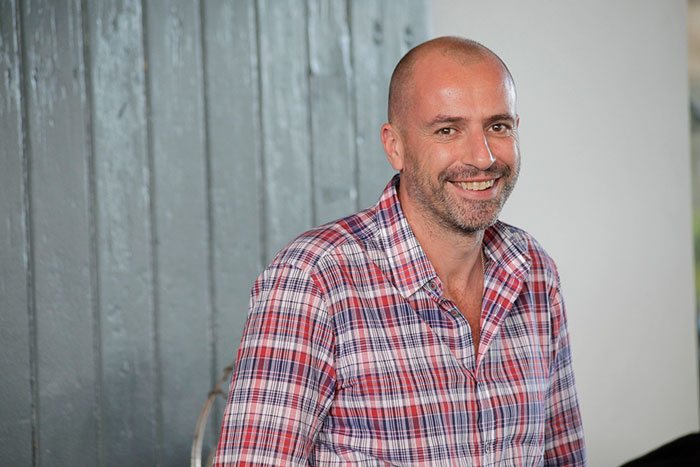To continue to thrive in 2018 New Zealand advertisers and marketers need to heavily invest in training, not only for their staff, but clients as well – particularly around programmatic.
The State of Play
Many think that programmatic has an image problem due to security and transparency issues, however this shouldn’t be the focus (as it has been thus far), as in fact, it has had huge growth in the last twelve months alone, particularly in New Zealand.
According to the IAB NZ, total programmatic spend in New Zealand last year for Display was a massive $60.3 million (up from $19.3 million in 2016), and today accounts for 44% of display advertising revenue (Q1 2018).
In my opinion, this is and will continue to grow, and it’s not just with the big players. It makes sense for small to medium sized businesses to get involved too, to improve efficiencies and broaden their reach to new customers.
We’re at a point where agencies are now looking at programmatic to target consumers at every step of the marketing funnel. The time where programmatic was used by publishers only to sell their remnant inventory is coming to an end – likely occur in the next five years.
By then I predict all inventory will be sold programmatically in New Zealand, with us seeing other channels including print, TV and out-of-home joining the party too.
Training
Training is key to the future of programmatic in smaller markets such as New Zealand. Yes, transparency is also important but this industry is actively working to provide more transparency in the supply and demand chain, which is a great step forward.
With the evolution of channels selling programmatic inventory, this means a pivot in skills and business models is required. Two to three years ago, agencies generated 90 per cent of revenue, however now programmatic is taking more of the pie.
This doesn’t necessarily mean machines will replace humans; it just means the style of the job changes and requires specialism. Capability in New Zealand to use this high touch and complex software is on the rise. In fact, at Yahoo New Zealand, we have increased the number of programmatic specialists in our team since launching Yahoo Platforms 18 months ago.
However as we continue to enhance and develop this new technology every day, we need to simultaneously upskill our local traders, to be the best of the best. Training programmatic specialists is a challenge we’ve never before faced as an industry, so how can we ensure our teams are upskilled in these emerging areas of tech?
Traders
Ultimately, only 50% of a campaign’s end result is due to the technology, with the other 50% down to the trader’s understanding of how to optimise it. Two traders using the same DSP to run the same campaign can deliver very different outcomes. Algorithms can optimise towards specific KPIs but it’s the human touch that will make a huge difference for the client.
Are the robots coming, you ask? Yes and no. Artificial intelligence, which continues to be a hot topic, has been around for 30 years in one form or another. The real difference is that machines are now able to learn and deliver on direct campaigns.
The most common problem area for traders in this field however is when they are time-poor. It takes a lot of time and analytical skills to be able to optimise a campaign properly on a demand-side platform (DSP). Even though campaigns are becoming more sophisticated, machines aren’t going to replace people any time soon. We still need them.
Yet, I feel there is a shortage of programmatic traders in the New Zealand market, which is becoming a huge recruitment problem.
Local leaders
As we know, technology is evolving at a fast pace with new features added to DPSs all the time. But what is lacking in our market is the local touch as currently, all DSPs that operate in the New Zealand market are from Australia or Singapore, bar one.
BrightRoll is the only DSP with a local New Zealand based team to support its clients and agency partners.
It’s important to show this local commitment and take the relationship to the next level, as being able to support clients with a face-to-face relationship when they need you most is crucial. One way to take this further could be to organise Lunch & Learn sessions, something we do with our trading partners, to upskill them and to review their campaigns together. It’s not only the traders who should be familiar with the technology.
I also see it as a priority to have c-suite executives (agency or client side) participate in local initiatives to better transparency for the industry. Recently the IAB launched a new initiative called ADS.TEXT which is supported locally by the IAB in New Zealand and a growing number of local publishers.
This initiative is great to fight against fraudulent inventory, allowing the different parties to understand who the authorised digital sellers are, thus understanding that the inventory is coming from a trusted source. This is where transparency links back to training and upskilling.
Ultimately, there is still work to do in New Zealand. Programmatic is growing at a fast pace and yet we don’t have the skilled recourses to meet this demand. That is why it’s more important than ever to upskill from within, from traders to those client side. If smaller markets like ours are to keep up and impress international talent, we need to lead the way from home soil first.
Share this Post



